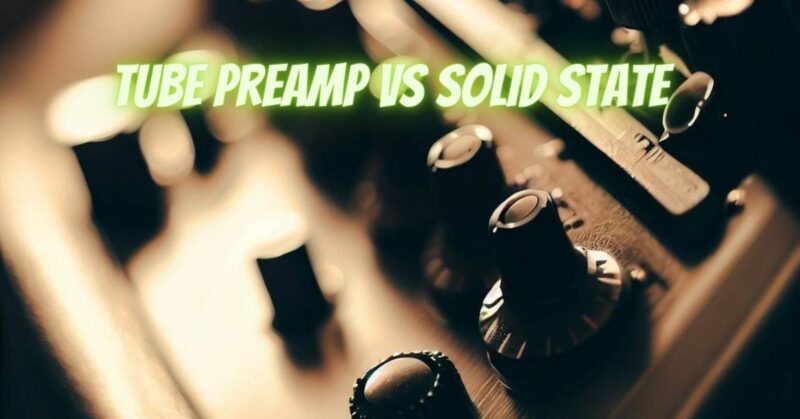The debate between tube preamps and solid-state preamps has been a long-standing topic among audiophiles and music enthusiasts. Each technology offers its unique set of characteristics, tonal qualities, and advantages. In this article, we will delve into the differences between tube preamps and solid-state preamps, explore their respective strengths and weaknesses, and help you decide which one might be the right choice for your audio needs.
Tube Preamp:
Tube preamps, also known as valve preamps, utilize vacuum tubes to amplify audio signals. These tubes are prized for their warm and harmonically rich sound, often described as “musical” and “organic.” Tube preamps are known for their ability to add pleasing harmonics and natural compression to the audio signal, which can create a sense of depth and dimension in the soundstage. They are particularly popular among enthusiasts of vintage audio equipment and genres like jazz, blues, and classic rock, where their tonal characteristics are highly valued.
Advantages of Tube Preamps:
- Warm and Musical Sound: Tube preamps impart a distinctive warmth and smoothness to the audio, which can be pleasing to many listeners.
- Harmonic Richness: Tube preamps add harmonics and subtle distortion, enhancing the character of the sound and adding a touch of nostalgia.
- Natural Compression: Tubes naturally compress the audio signal when driven at higher volumes, contributing to a more dynamic and expressive sound.
- Vintage Aesthetics: The visual appeal of glowing tubes and retro design can add a nostalgic charm to the audio setup.
Solid-State Preamp:
Solid-state preamps use semiconductor devices like transistors to amplify the audio signal. They are known for their accurate and transparent sound reproduction. Solid-state preamps offer a more neutral and uncolored sound, faithfully preserving the input signal without adding any additional harmonic distortion. They are often preferred in professional recording studios and for applications where audio fidelity and accuracy are of utmost importance.
Advantages of Solid-State Preamps:
- Accuracy and Transparency: Solid-state preamps provide a clean and uncolored sound, faithfully reproducing the original audio without adding any additional harmonics.
- Reliability and Durability: Solid-state preamps are generally more reliable and require less maintenance compared to tube preamps.
- Consistent Performance: Solid-state preamps offer consistent performance regardless of the volume level, making them ideal for critical audio applications.
- Efficiency: Solid-state preamps are more energy-efficient and generate less heat compared to tube preamps.
Choosing the Right Preamp for You:
Ultimately, the choice between a tube preamp and a solid-state preamp depends on your personal preferences, the type of music you listen to, and your desired audio characteristics. If you value warm and harmonically rich sound with vintage aesthetics, a tube preamp might be the perfect choice. On the other hand, if you prioritize accuracy, transparency, and a more modern and neutral sound, a solid-state preamp might be more suitable.
Some audio enthusiasts opt for a hybrid preamp, which combines tube and solid-state circuitry, offering the best of both worlds. These hybrid preamps provide the warm sound of tubes with the accuracy and transparency of solid-state technology.
The debate between tube preamps and solid-state preamps continues to inspire discussions among audiophiles and music enthusiasts. Both technologies have their merits, and the decision ultimately comes down to individual preferences and the desired audio characteristics. Whether you prefer the warm and musical sound of tubes or the accuracy and transparency of solid-state, there are excellent options available to meet your audio needs. With the right preamp, you can elevate your listening experience and immerse yourself in the captivating world of high-fidelity sound reproduction.

